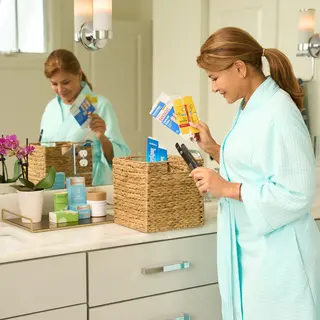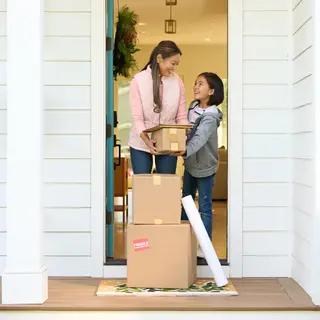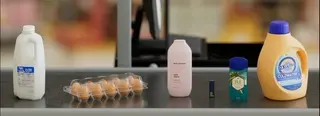
The choices we make, from our meals to our clothes, have an effect on the environment. And sometimes we can fall into habits that aren’t the best for us or the planet.
For example, maybe one of your habits is going to grab an iced coffee before work. There’s nothing wrong with a little morning pick me up, but it can lead to a lot of single use plastic cups being dumped in the trash.
To make your habits more eco-friendly, consider asking yourself “is there a way to do this more sustainably?” Working off my previous example, you can make your before-work latte more sustainable by getting it in a reusable cup.
This is just one example but building better, more sustainable habits can take time, so try not to get discouraged. Be gentle with yourself and remember: It’s okay to be an imperfect environmentalist.
If you’re in need of some inspiration to get you started, here are 5 sustainable habits you should consider getting into.
A papertarian is a fun term coined by the Paper and Packaging Board to highlight someone who lives a paper-based lifestyle. It’s about opting for paper-based packaging, and then recycling that packaging properly! They have some incredible videos featuring actress and comedian Retta, which you can see below.
Another key point is that papertarians understand the positive impact that small, everyday choices have on our forests and the environment. It’s so important to remember that our everyday actions can have a huge impact overtime.
One trait all papertarians have in common is a deep love of forests and recycling. Did you know that paper and cardboard are one of the most recycled materials in the U.S.? Paper and boxes can be recycled and made into new products up to seven times!
In 2023, 71-76% of corrugated cardboard packaging and 65-69% of paper was recycled in the United States. Approximately 80% of U.S. paper and packaging mills use some recovered paper fibers in their products, and most corrugated boxes are made from 70% to 100% recycled material.

You can become a papertarian by choosing products packaged in paper, and then properly recycling paper.
Some paper items that you can switch to and recycle easily include:
- Pasta and cereal boxes
- Flour and sugar paper packaging
- Pizza boxes (check your local recycling guidelines to see if they accept them)
- Stationary, writing paper, file folders and newsprint
- Magazines, catalogs and most direct mails
- Drink cartons or beverages packaged in paper holders
You can help make the paper recycling process even more efficient by emptying, flattening, and recycling the paper products you choose!
Did you know only ~1.2 percent of water can be used as drinking water? The rest is locked up in glaciers, ice caps, and permafrost, or buried deep in the ground. That’s why it’s so important to conserve water where we can.
According to the EPA, each American uses an average of 82 gallons of water a day at home.
Here’s how we can waste less water:
- Take shorter showers. If you struggle with this, play 1 or two of your favorite songs – and when it ends, be sure you’re out!
- Place a bucket in the shower to catch water as you wait for the water to warm up. Then use it for watering your garden, or houseplants! You can also use this water for chores, like washing the dishes or mopping the floor.
- Turn the tap off when you brush your teeth. Only turn it back on when you’re ready to rinse.
- Save pasta water by placing a bowl to catch it under the colander. Let it cool before using it to water your plants or reuse it again to cook (it’s a great thickener for sauces, or for cooking rice and other grains).
- Consider installing a rain barrel in your home if you have a yard. This way you can catch rainwater and reuse it around the garden.
- Recycle! Yes, recycling can actually save water because water is used in the creation of new products. Recycling one ton of paper can save 7,000 gallons of water.
Additionally, when you recycle paper you don’t just save water. You also benefit the environment in other ways.
Here’s why you should be recycling your paper (according to the EPA):
- Saves considerable landfill space.
- Reduces energy consumption.
- Decreases the need for disposal (i.e., landfill or incineration which decreases the amount of CO2 produced).
Reading on paper is a great way to learn and educate yourself on the climate crisis. And, it helps you expand your vocabulary, improve memory, and open your perspective.

Environmental books can teach us what actions we can take to help mitigate climate change. They can also be incredibly helpful in breaking down the often complex problems we face with the climate crisis.
One of my all time favorites is Braiding Sweetgrass by Robin Wall Kimmerer who reflects on her life as an Indigenous woman and scientist.
She circles toward a central argument: that the awakening of ecological consciousness requires the acknowledgment and celebration of our reciprocal relationship with the rest of the living world.
There are so many other environmental books I love too: Here are some of my favorite sustainable books on eco-friendly living.
I also wrote a book! Shameless plug, but 101 Ways to Go Zero Waste is a non-judgmental, beginners handbook for eco-friendly and sustainable living. It’s also completely plastic-free. It’s printed paper from trees that are sustainably sourced and certified, including the cover.
To keep things even more eco-friendly, consider checking out some environmental books from the library. Libraries are great examples of the sharing economy in action, and they help reduce waste. You get to enjoy a book and when you’re done, return it for someone else to enjoy.
Get into the habit of utilizing your items before simply tossing them out (or even recycling them). This will prevent waste, plus give your items a secondlife.
For example, even though paper is recyclable, you can get creative and upcycle it before tossing it into your recycling bin. I love saving cardboard boxes to reuse for gifts, or storing little trinkets/envelopes.
I also like to save all of the brown paper I get from shipments over the year to wrap my Christmas presents. Last year, I got rubber stamps and ink to create really cute homemade wrapping paper.
After the gift has been opened, it’s still perfectly fine to recycle!

I know not everyone has the time to do this, but cooking from scratch is such a great way to make use of what you already have and connect with your food. It’s all about slowing down and honoring the simplicity of homemade products.
You can make so many items from scratch with relative ease:
- Brown sugar (just combine white sugar with molasses)
- Powdered sugar (blend up some white sugar in a blender)
- Jams (just heat your fruit of choice up on a stove with some sugar and lemon juice)
- Peanut butter (blend roasted peanuts in a blender until smooth)
- Homemade vanilla extract (combine vanilla beans and alcohol)
- Apple cider vinegar (fill a clean jar with apple scraps, sugar and water and store in a dark, dry place)
- Vegetable stock (bring vegetable scraps and water to a boil, then simmer for at least an hour before straining and saving the liquid, composting the scraps)
You can also take this a step further and make other, more complex foods from scratch as well including pies, cakes, pickles, muffins, granola, breads, fresh pasta, tomato sauce and more. It all depends on the amount of time you have, ingredients you have on hand, and if you enjoy cooking/baking.
There are other items you can try learning to make at home too, like DIY beeswax candles, body soap, baskets, or even knitting your own clothing.
Here’s a full list of items you can make, instead of buying at the store to save you a buck.




